Introduction
Located in the Western Hemisphere, Mexico makes up the southern region of North America. The country encompasses 761,600 square miles and is home to almost 127,000,000 residents. Known for its vibrant culture, exquisite cuisine, beautiful beaches, and sandy deserts, Mexico is a fascinating place. Many festivals and ancient cities provide a fantastic opportunity for visitors to learn about the history and culture of the country. Mexico is home to the largest city in North America, Mexico City. The massive country plays a pivotal role in the world economy and influence today, but it also has a rich, captivating history. Keep reading to discover how Mexico got its name and more!
History of Mexico
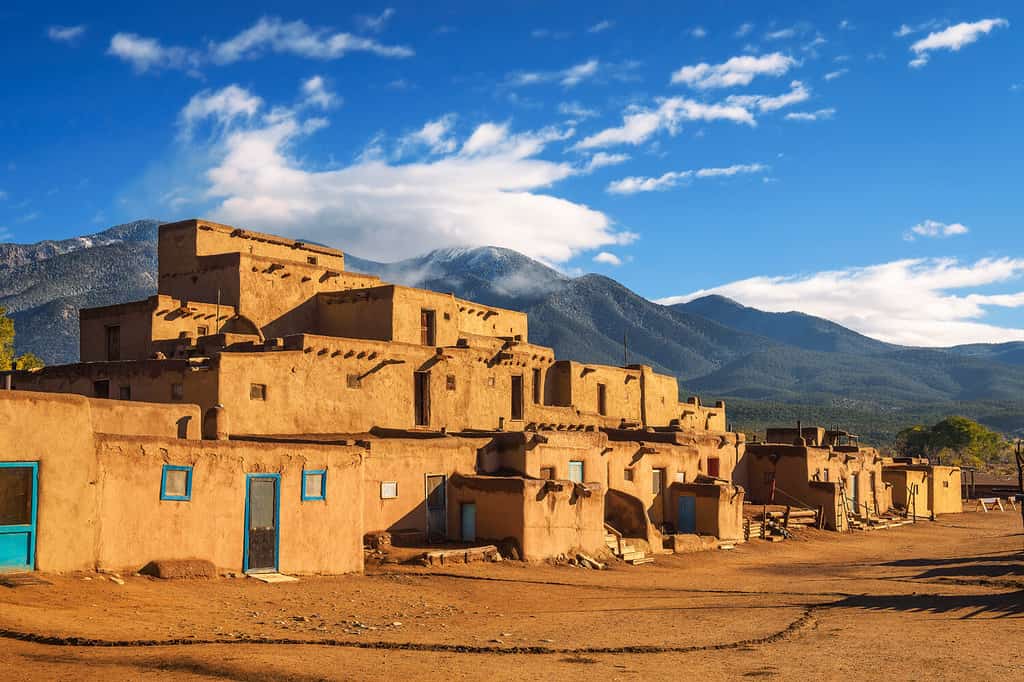
Mexico has been home to many ancient cultures and civilizations whose stories are still told.
©Nick Fox/Shutterstock.com
Today, Mexico is home to more Spanish speakers than any other country in the world. The third-largest country in Latin America has been home to many ancient cultures and civilizations whose stories are still told. Here is a brief history of the country and its fascinating development.
Ancient Civilizations
The first known people group in Mexico was the Olmecs. This civilization first appeared in present-day Veracruz and grew substantially from 1200 to 900 B.C. While not much is known about the Olmecs, their iconic giant head sculptures carved from stone still stand to this day.
As the years passed, more small villages centered around hunting and farming began popping up along the southern region of the country. These towns grew significantly as they drew more inhabitants. One town, Teotihuacán, was constructed in the area that Mexico City is in today. Influences of this powerful civilization can be seen in many other areas around Mexico, and the population of the city grew to an astonishing 200,000 residents. However, Teotihuacán was overthrown in the seventh century.
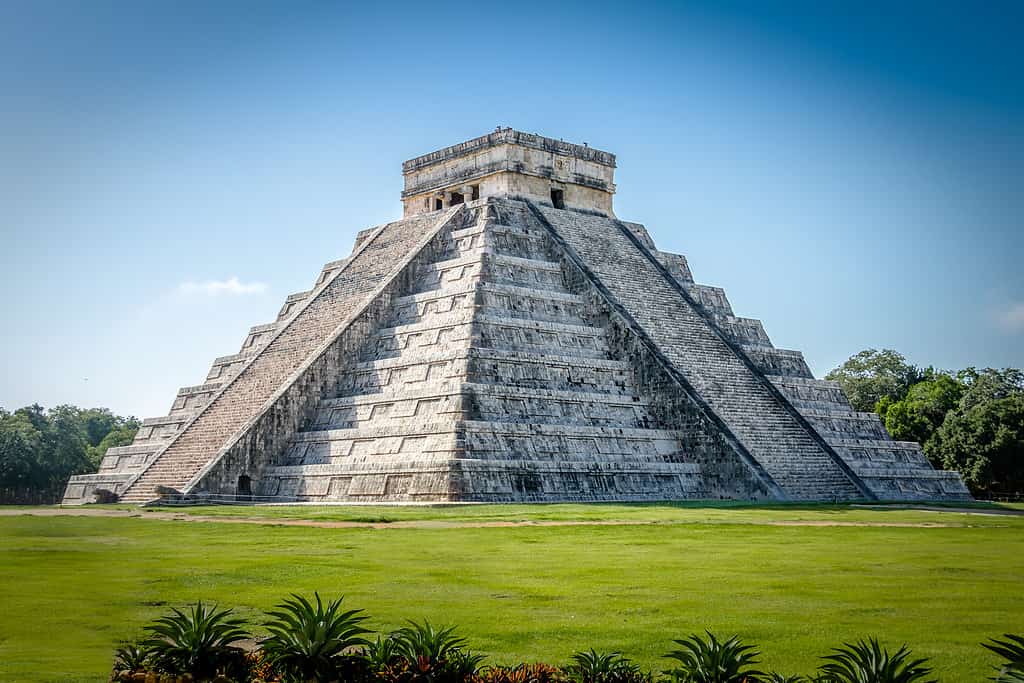
Throughout Mayan cities, elaborate palaces and places of worship were constructed, many of which remain to this day.
©iStock.com/diegograndi
While many cities and civilizations contributed to Mexico’s culture, one stands out among the rest. From 250 to 900 A.D., the Mayans were the most powerful people group in the country. On top of creating a system for reading and writing, the Mayans made the concept of religion extremely significant in Mexico. Throughout their cities, elaborate palaces and places of worship were constructed, many of which remain to this day.
The last ancient civilization to rise to power in Mexico was the Aztecs. This society shares many similarities with civilizations today, including a governing body that oversees many different towns. The Aztecs formed a native language, which is how Mexico got its name. The Aztecs furthered the Mayans’ emphasis on religion and grew to an empire with 5,000,000 residents.
Colonization in Mexico
In 1519, Hernán Cortés arrived in Veracruz. Cortés was the first European to set foot on Mexican soil, and he quickly began to colonize the area. Moctezuma II, the king of the Aztecs, believed that Cortés could be a serpent god. This caused the king to invite Cortés to the Aztec capital city. However, along the way, Cortés formed alliances with small villages and began building an army. Just two years later, Cortés attacked and overthrew the Aztecs, renaming the area “Nueva España.”
Over the coming years, Spaniards continued to move to Mexico, wiping the Aztecs out through the spread of foreign diseases and enslavement. The Europeans also enforced the beliefs of the Catholic Church on the native people, erasing much of their culture.
The Birth of Mexico as a Country
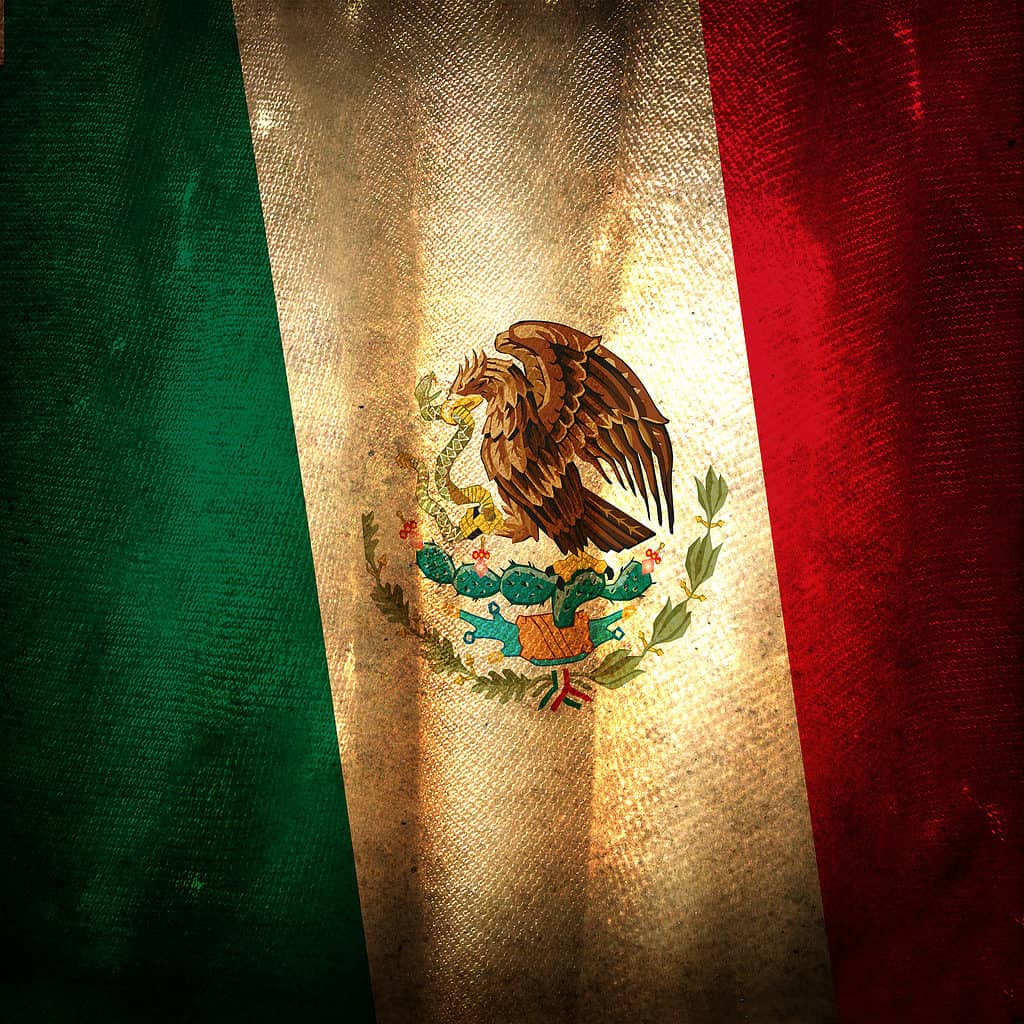
Mexico finally gained independence from Spanish rule in 1821.
©Wi_stock/Shutterstock.com
Colonization and indoctrination continued from the 16th century until the 19th century. However, in 1810, priest Miguel Hidalgo y Costilla called for rebellion. Support for the cause grew, and Mexico finally gained independence from Spanish rule in 1821. While a constitution for the new country was drafted, Agustín de Itúrbide quickly became a dictator. Only a year later, Itúrbide was overthrown, and a new constitution was formed. The Mexican Republic was made up of 19 states and four territories. While the country has seen revolution and attempted takeovers since the establishment of a constitution, Mexico has remained independent.
How did Mexico get its Name?
While the Aztec civilization may have fallen, its influence remains. The Aztecs are the reason for Mexico’s name. The country’s name derives from three words in Náhuatl, the native tongue of the Aztecs. The first two letters in Mexico are derived from the Náhuatl word for moon, metztli. The middle two letters come from the Aztec’s word for center, xictli. Finally, the last two letters in Mexico make up the word co, the Náhuatl saying for place.
Together, these words form “Mexico,” which means the place in the center of the moon. This refers to the location of the Aztec city Tenochtitlán, which is now the center of Mexico City. Tenochtitlán was built in the center of Lake Texcoco, also known as the Lake of the Moon. As the country’s hub of culture and development for centuries, it’s no wonder Mexico City plays an important role in how Mexico got its name.
Wildlife
Aside from a rich, intriguing history, Mexico is also home to some amazing animals. Here are just a few of the creatures you may encounter on a visit to the country.
Jaguar
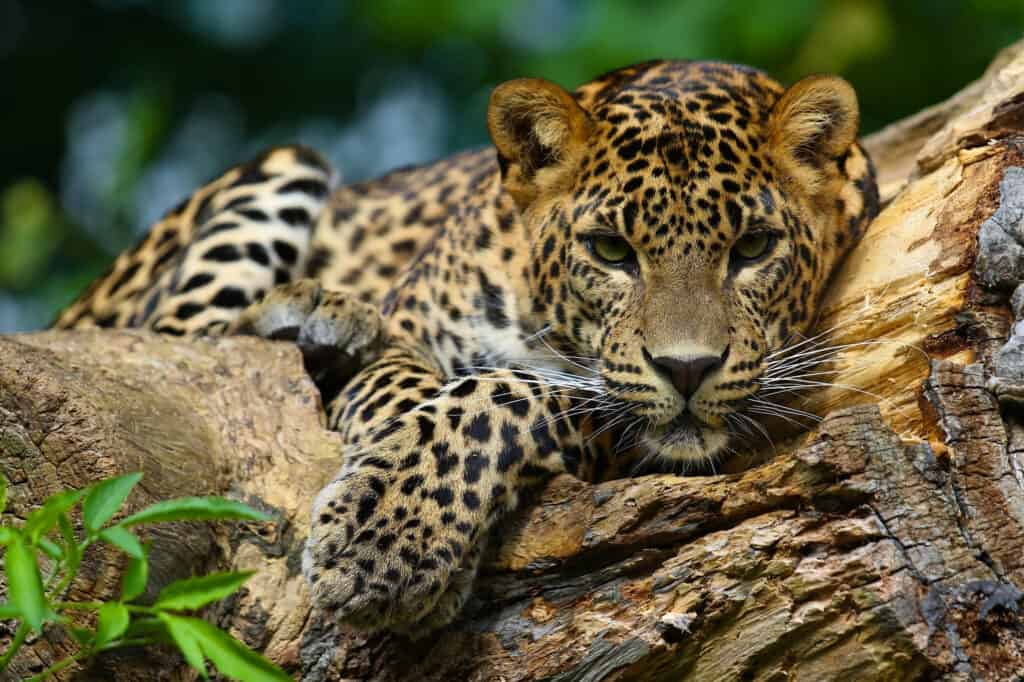
Many of the ancient civilizations in Mexico worshipped jaguars and considered them gods due to their incredible speed and power.
©L-N/Shutterstock.com
Jaguars are mammals that typically live between 12 to 15 years in the wild, surviving off of a carnivorous diet. These cats look very similar to cheetahs, with orange fur and black spots. Jaguars can stand up to six feet tall, and weigh up to 250 pounds, making them the largest cats in the Americas! Many of the ancient civilizations in Mexico worshipped jaguars and considered them gods due to their incredible speed and power. Unlike many other cats, jaguars love the water. These animals will take a swim to cool off or to look for prey.
Spider Monkey

The long limbs and tails of the spider monkey resemble an arachnid, lending these animals their name.
©Laura Kathleen Lewis/Shutterstock.com
Spider monkeys are fascinating creatures. These mammals are relatively small, weighing around 13 pounds and measuring just over two feet in height. Although they are small, these monkeys live for 22 years in the wild, surviving off an omnivore diet of fruits and insects. The long limbs and tails of the spider monkey resemble an arachnid, lending these animals their name. While spider monkeys rely heavily on their arms and legs, their tails are also incredibly powerful. A spider monkey’s tail can support its entire body weight!
Scorpion
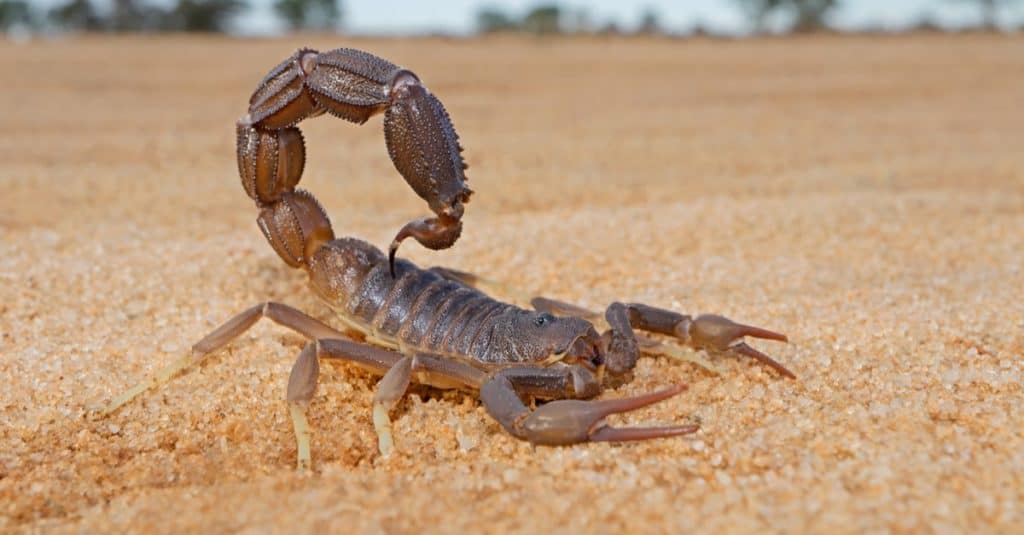
Scorpions are invertebrates, which means they do not have a skeleton.
©EcoPrint/Shutterstock.com
Many different species of scorpions can be found scurrying across the ground in Mexico. Scorpions are invertebrates, which means they do not have a skeleton. However, their hard outer shell protects them from harm. These critters live between three and eight years in the wild, living off of a diet that consists mainly of insects. One fascinating feature of scorpions is their ability to conserve food. When there are few insects to hunt, scorpions can slow down their digestion, allowing them to live off of just one insect per year!
Volcano Rabbit
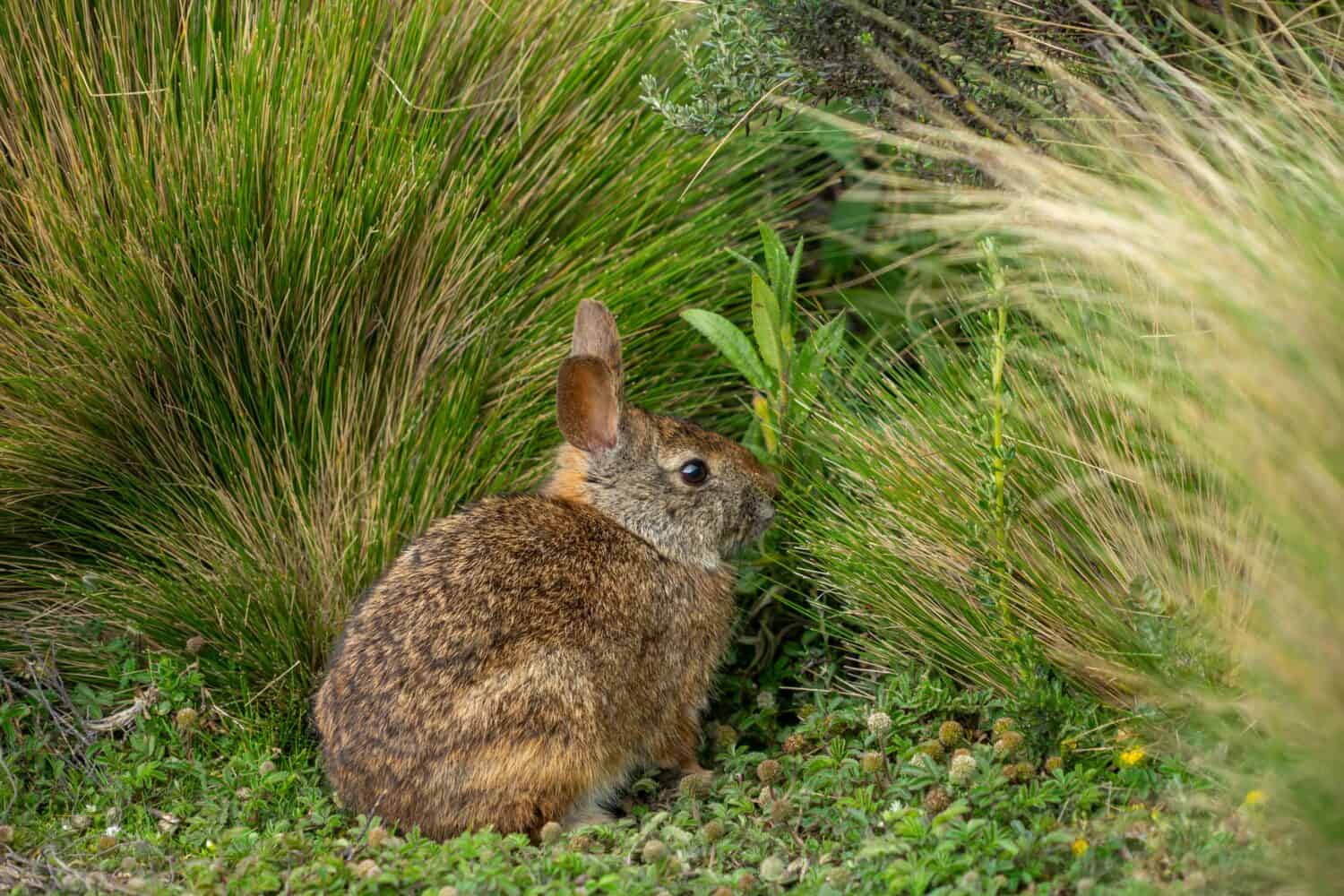
Only around 7,000 volcano rabbits remain in the wild, and their population is slowly decreasing.
©Jo Reason/Shutterstock.com
These tiny rabbits are the second-smallest in the entire world. Volcano rabbits get their name from their habitats: volcanoes. These mammals live on the slopes of four volcanoes near Mexico City. They usually weigh less than a pound, and survive off of a herbivore diet. Volcano rabbits have small ears and a sandy-colored coat, allowing them to blend in with their surroundings. Sadly, these furry creatures are endangered. Only around 7,000 volcano rabbits remain in the wild, and their population is slowly decreasing.
The photo featured at the top of this post is © Andrea Izzotti/Shutterstock.com
Thank you for reading! Have some feedback for us? Contact the AZ Animals editorial team.






